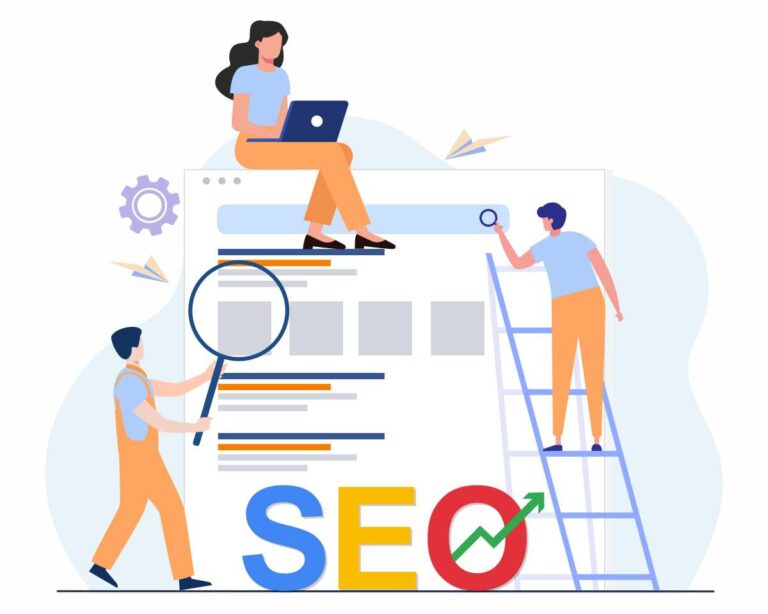SEO Visibility Loss: The best Solutions by 2025
What Causes Search Visibility Loss and How to Restore It?
As a website owner or content marketer, a sudden decline in website traffic and lost keyword ranking might be your worst nightmare.
But in this blog post, we will assist you in understanding why your website may be losing its internet presence and how to rapidly resolve these difficulties.
You may avoid additional loss of rankings, conversions, and revenue by recognizing the problem and implementing some of the techniques mentioned below.
What exactly is SEO Visibility?

SEO visibility is a way of measuring how often your website shows up in search results, not just whether you rank for a keyword, but how prominently and frequently your content appears across the search landscape.
In the past, SEO visibility mostly meant showing up on the first page of Google for a set of keywords. But in 2025, it’s no longer just about ranking number one on traditional search engine results pages. Visibility now extends to a wide range of places, thanks to evolving search technologies.
Today, your content can appear in featured snippets, answer boxes, video carousels, People Also Ask sections, image packs, and even voice assistant responses. With tools like Google’s AI-powered Search Generative Experience (SGE), your content might be quoted or summarized inside an AI-generated answer, sometimes without the user even clicking a link.
This broader landscape means visibility includes how often your content is seen, interacted with, or cited across these new formats. It is about being present where users are searching, whether that’s text-based queries, voice searches, or even visual searches using tools like Google Lens.
The more spaces your content appears in, the more visible your brand becomes. And that kind of visibility goes beyond traffic; it builds trust, authority, and long-term awareness.
Why is SEO Visibility Important?
In 2025, showing up in search results is no longer just about clicks — it’s about presence. Search engines have evolved, and so has the way people interact with them. Between zero-click searches, AI-generated answers, and voice assistants giving users quick results without visiting a website, just being visible has become a win in itself.
Searchers now get their answers in many ways. Sometimes it’s a featured snippet at the top of the page. Other times it’s a visual result, a product card, or an AI-generated summary that pulls content from multiple sources. In some cases, the user never even clicks a link, and that’s becoming more common every day.
That’s where SEO visibility matters. Even if someone doesn’t land on your site, having your brand name, your content, or even your product mentioned in these spaces builds recognition and trust. Over time, those repeated impressions can lead to brand familiarity, future visits, and even conversions through other channels.
It’s also important to realize that branding and SEO are no longer separate strategies. When your site consistently shows up across different search formats, whether in a video carousel, a voice result, or an AI response, you’re reinforcing your authority in your niche.
Visibility is influence. And in today’s search landscape, the sites that show up the most, even without clicks, tend to be the ones that win long-term.
How to Recognize SEO Visibility Loss
You may believe that your website is losing SEO visibility based on indicators such as fewer SaaS product signups or notably reduced eCommerce sales. However, you must provide confirmation that this is occurring. There are two signs of decreasing SEO visibility:

If your website is getting less organic traffic, your rating has most certainly dropped, and your SEO visibility has suffered as a result. Most of the time, this occurs following an important Google update for which you were unprepared.
Google Analytics (GA) may be used to assess the loss of organic search traffic. The severity of the problem will be determined by your overall organic traffic.
You can see when organic traffic for a given keyword started to fall; this can give you an idea of what the problem may be.
Ahrefs and Semrush are three tools you may use to monitor the success of your search engine rankings.
You will gain a lot of information from visual graphs, which will allow you to rapidly discover ranking and impression decreases.
This will assist you in optimizing site exposure and checking the indexing status of your site. It also enables you to compare traffic prior to and following the decline in search visibility.
Improve Your SEO Visibility
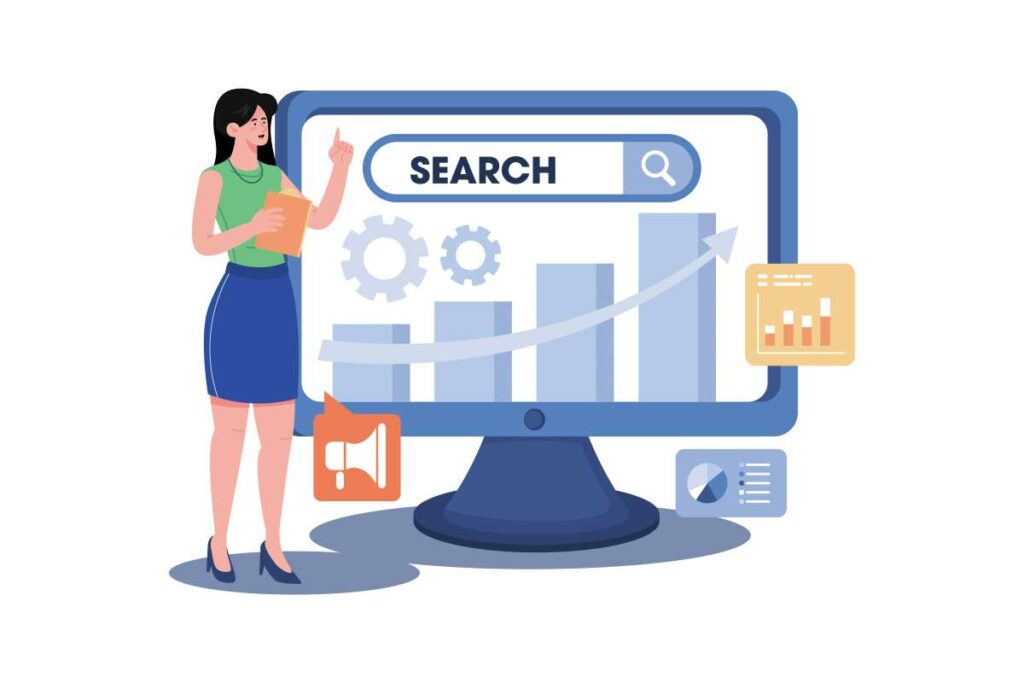
Using Semrush and Ahrefs to locate lost ranks
With its Rank Tracker feature, Ahrefs allows you to track the performance of certain keywords over time on desktop and mobile. To track particular terms, you can use interactive graphs.
You may also utilize the Organic Search function to see how your website’s position has changed recently. It will tell you which keywords you have lost visibility for and how much.
Semrush has an Overview page where you can track sponsored or organic search performance to gain a sense of your site’s SEO visibility. Charts for your domain’s visibility, average position for each keyword you’re tracking, and expected traffic are available.
Semrush provides a function called visibility, which is based on click-through rate (CTR) and represents a website’s advancement through Google’s top 100 for presently tracked keywords.
Common Causes of Loss of Organic Search Visibility
When you see you’ve dropped in the rankings, the next step is to figure out why. There might be various explanations for the decline in organic search visibility:
According to reports, Google changes its algorithms 500-600 times every year. However, these modifications are generally minimal and do not result in a decrease in online exposure. However, you should keep an eye out for major, fundamental changes that occur once or twice a year.
E.g., the Title Tag upgrade resulted in missing author title tags for around 20% of search results, resulting in a decline in traffic. Poorly authored titles with the incorrect position in the search results also reduce site traffic since consumers will not click on them.
Furthermore, Google considers EAT (expertise, authority, and trustworthiness) to be the most essential factor for YMYL (your money, your life) sites dealing with health and finance.
The Title Tag update distorted health-related titles. E.g., the term “vaccination” has been added to the names of pages that discuss a disease but not its vaccination.
Some of the most typical technical issues that might have an impact on your SEO visibility are:
Hummingbird and Panda modifications have had a significant influence on traffic and SERP ranks. Google releases such adjustments on a regular basis in order to make SERPs more user-friendly.
Since 2019, Google has made mobile-first indexing the default setting for all new or previously unknown websites. Google will largely employ mobile versions of websites for indexing and ranking.
Because the majority of users use mobile devices to access Google’s search engine, Googlebot now indexes pages as a smartphone client.
Business websites must also implement the best techniques to become mobile-friendly. Your rankings are likely to suffer if you do not have a mobile-friendly website.
If Googlebot tries to scan your website at the same time your server is offline, your rankings may suffer. The longer and more frequently your server is down, the worse your search engine exposure will be. So choose the right web hosting company.
If you have internal duplication, which means that two URLs on your website exhibit the same information, Google is unsure which URL to display to people, and the authority of each page is divided. As a result, organic search visibility suffers.
The main function of Canonical links is to add one of the URLs with duplicate content to Google’s index while preventing the other from appearing in SERPs.
If you utilize canonical tags incorrectly, for example, if you get confused between relative and absolute URLs, your high-ranking page may be substituted by an allow-authority page. As a result, your keywords on the high-ranking page will lose SEO visibility.
When redesigning a website, a lot of businesses fail to prioritize SEO. This might be expensive in terms of lost SEO visibility. Many problems can arise as a result of site redesign issues:
What are your options?
Google has not indexed the site.
If you include the tag meta name=”robots” content=”noindex”> in the HEAD part of your HTML code, your site may be eliminated from Google’s search results.
Examine their previous content
To see how your rivals’ material looked in the past, use Wayback Machine or Versionista. You can discover if they have rectified or enhanced previous material, which is why their SEO visibility has increased positively.
Ethically spy on your competition
Compare your website to a couple of your top rivals using a competition analysis tool like SimilarWeb. Verify any fixes made by your competitors during the time you experienced SEO visibility reduction.
Determine if they constructed new backlinks strategies.
Use backlink platforms like Ahrefs or Majestic to discover if your competition has added new backlinks, causing a shift in the competitive landscape. They could be starting the newest SEO strategy, like local SEO.
Problems with hosting
Your hosting company may be experiencing technical issues, causing your SEO visibility to be weak.
HTTPS in comparison to HTTP
To make the Internet safer, Google adopted HTTPS as a ranking indication in 2014. Since then, it has prioritized crawling HTTPS versions of pages over HTTP versions.
This indicates that your competition has purchased an SSL certificate in order to improve its search engine rankings. You should also get one to inform Google and your consumers that your website is totally secure.
Among these concerns are:
Errors during the website/CMS migration
Unintentionally, website migration, CMS migration, or adopting WordPress alternatives might produce problems in the code or modify the redirection method.
Site redesign and relocation may result in a number of errors:
Lost included bits
According to Moz’s research, opting out of Featured Snippets resulted in a 12% decrease in traffic.
Featured Snippets appear above Google search results and receive around 8.6% of all clicks. The first result beneath the Featured Snippet receives around 19.6% of all clicks.
When no Featured Snippet is present, the top result receives 26% of all clicks.
As a result, even if you rank first but do not receive the Featured Snippet, your competition may be taking clicks from you.
Backlinks that have been lost
You may use Majestic or Ahrefs to see whether you have lost any backlinks, just as you would check your competitors’ websites to see if they have earned new backlinks from authoritative websites.
If your site loses inbound links, Google believes you are no longer an authority and decreases your search ranks, affecting your visitors.
How to Increase SEO Visibility in 14 Easy Steps

Take note of the following suggestions and put them into action.
1. Maintain Evergreen Content
By changing the publishing date or developing fresh titles, you can keep your evergreen material valuable.
This indicates to search engine algorithms that you are offering new information, which might increase exposure.
You may also want to edit or improve your evergreen content to raise click-through rates (CTRs) and improve your placement on search engine results pages (SERPs). You can do it by updating your content using semantic SEO.
2. Optimize existing material
Add more relevant keywords to your existing material.
Begin by performing keyword research, establishing which terms are high-ranking, and comparing what you discover to what is currently contained in your existing content.
Then, optimize accordingly.
3. Include More Interesting Multimedia
To enhance customer engagement, revisit your content marketing plan and look for methods to add or incorporate additional multimedia material on your website.
Use the most powerful content marketing tools to boost your website’s SEO visibility
Engaging content of various forms will draw more people to your website and boost the visit time, resulting in a lower bounce rate.
Explainer videos, product demos, video blogs, and client testimonials are examples of videos.
Infographics that simplify difficult information and provide a visual aspect to the material.
Quizzes, polls, calculators, downloadable eBooks, and other items are examples of interactive content.
Visitors to your website will remain longer if you provide interesting material.
In turn, Google’s machine learning algorithms will use parameters like as dwell duration and bounce rate.
The longer time website visitors spend on your site, the more it communicates to Google that your material is relevant, meets searchers’ goals, and is valuable.
4. Increasing the Amount of your best content
Increase the total amount of high-quality material you provide to build trust and authority.
With long-form content and insightful pillar blog posts, you may establish yourself as the go-to source on a given issue. Also, for every piece of content, consider search intent, and release new material on a regular basis.
Adding content will attract the attention of Google and other search engines, which will subsequently index your web pages.
5. Long-Tail Keywords Should Be Your Main Focus
Long-tail keywords should be identified and targeted strategically. Find ones with less competition and produce content around them that is more beneficial than what is already available.
6. Create More Effective Meta Tags
Meta tags are the descriptive content that draws search engines’ attention.
Compose better ones and optimize them, including your meta title and meta description, to boost your exposure.
In search results, the meta description shows just beneath your title and can entice visitors to click and enter your website for more information and the solution to their inquiry.
These meta tags, when adjusted, may raise your total CTR and engagement.
7. Think about creating more internal links.
Include internal connections that connect one page on your site to another. This activity has the potential to improve your ability to rank better.
However, avoid stuffing too many internal links into a single page.
8. Create a Backlinking Strategy
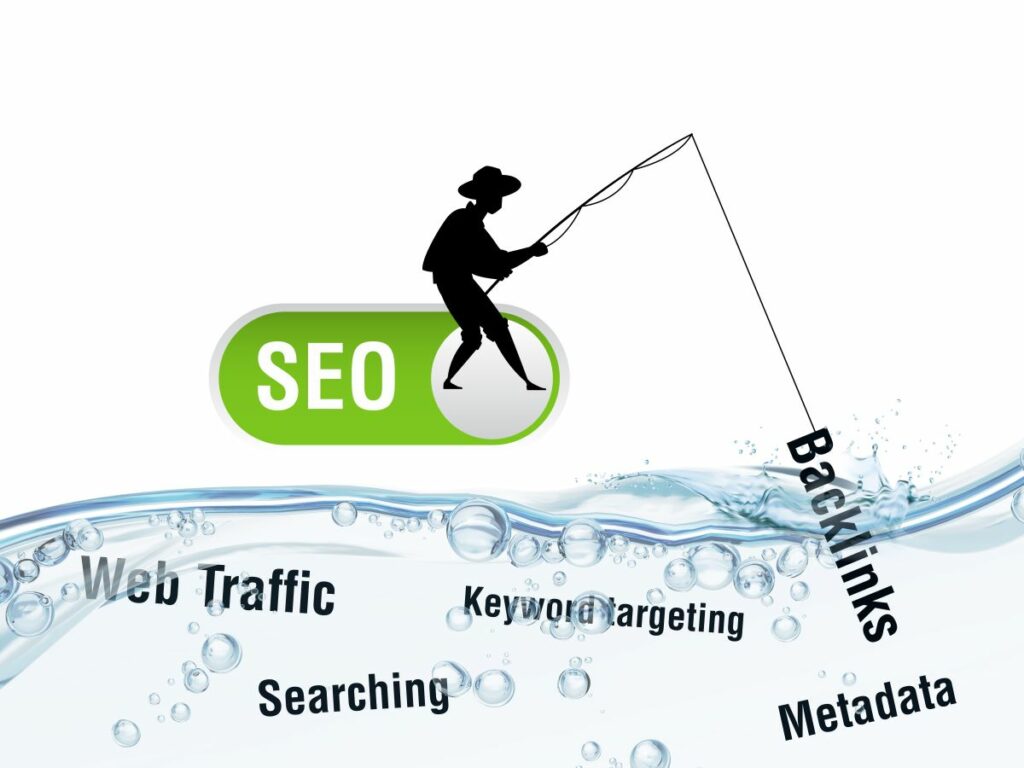
Increase the quantity of backlinks from relevant, high-authority domains. This will notify Google that you are providing readers with authoritative material.
You may do this in a variety of ways, including:
9. Examine for Keyword Cannibalization.
Examine your keyword strategy to see whether many pages are optimizing for the same keywords. This may increase competition among your pages and may harm your SERP rankings.
10. Examine your website’s Page Speed
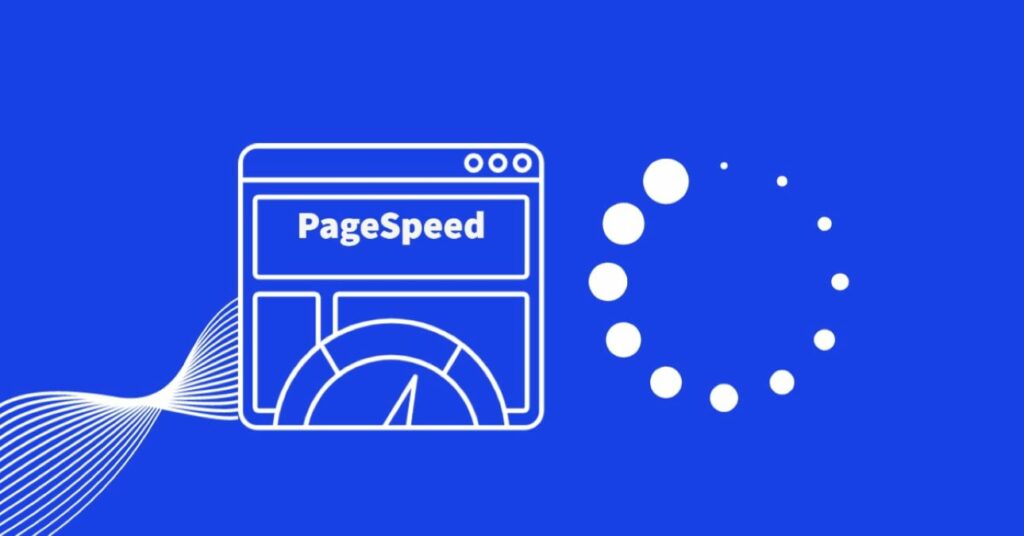
Examine your page loading times to provide a positive visitor experience on your website.
You can maximize user engagement, visit time, and conversion potential by optimizing page loading times.
11. Write “frequently asked questions”
Optimize your on-page content to include “frequently asked questions” (FAQs) and “people also ask” sections. This technique can enhance your website’s SEO visibility in a positive manner.
12. Ensure that your website is mobile-friendly.
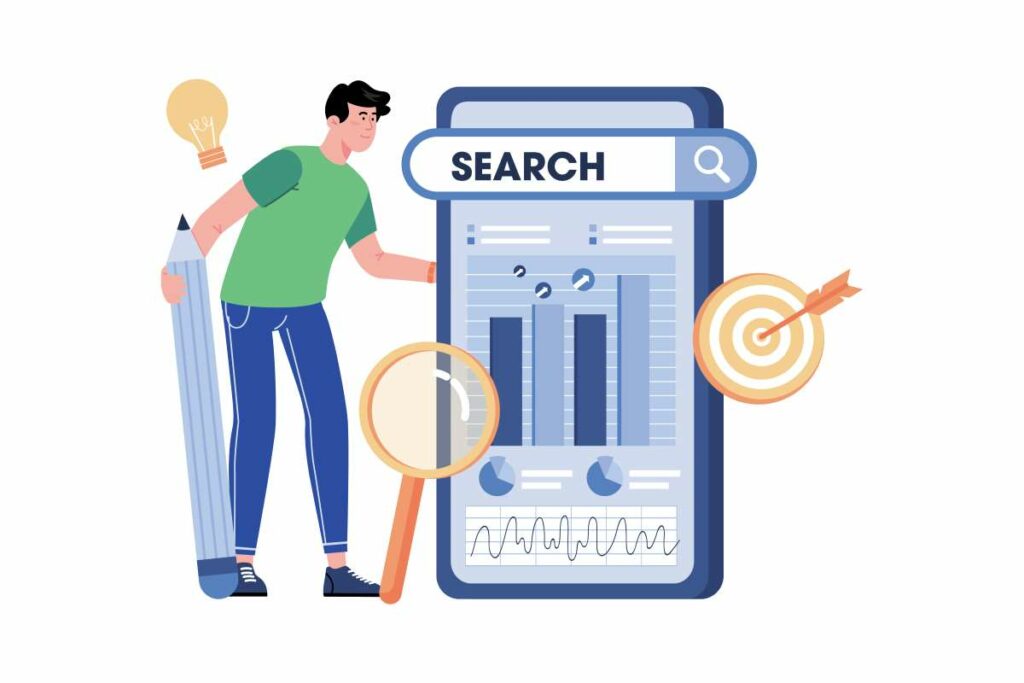
With so many people using their phones to look for information these days, your website must be mobile-friendly.
This will not only improve the user experience but will also increase your exposure owing to Google’s emphasis on mobile-first indexing.
13. Insert rich snippets
Rich snippets or rich results are Google search results that include additional information. This information is derived from Structured Markup (such as Schema) in a page’s HTML.
Rich Snippet Examples
They are more appealing than standard search results, resulting in a greater CTR.
People who ask commonly requested questions might also use keywords.
Did you know that 43% of all searches now include (PAA) boxes?
Relevant keywords can be found in PAA boxes (People Also Ask), and you can improve your on-page content to boost the possibility of Google picking up your website and displaying it in the box.
14. Boost Your Domain Authority
Domain Authority (DA) is a Moz indicator that is evaluated on a scale of 1 to 100.
The greater your DA, the more likely your website will rank higher and receive more organic visitors. As a result, it’s a wonderful approach to track your SEO efforts and compare your website to rivals.
You may enhance domain authority by doing the following:
Some things to look for in an SEO audit:
Round up
A sudden and unexplainable decline in traffic can be worrisome and frightening since it generally equals fewer conversions and, as a result, income loss. However, you may resolve the issue by reading through the list of causes for a decline in organic search visibility, recognizing the problem, and implementing appropriate solutions.






